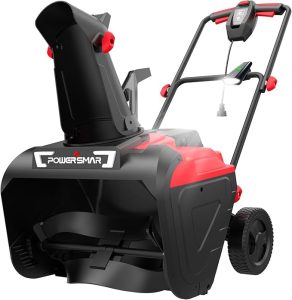
As winter approaches, it’s crucial to ensure your snow blower is ready to tackle the heavy snowfall ahead. Properly preparing your snow blower for winter not only ensures optimal performance but also extends its lifespan. Follow this comprehensive guide to prepare your snow blower for winter and avoid any unexpected breakdowns during the cold season.
Inspect and Clean Your Snow Blower
Before you begin the preparation process, thoroughly inspect and clean your snow blower. Remove any debris, dirt, or leftover snow from the previous season. Pay special attention to the auger, chute, and other moving parts. A clean snow blower is easier to maintain and less likely to experience issues during operation.
Check and Change the Oil
One of the most important steps to prepare your snow blower for winter is to check and change the oil. Old or dirty oil can cause engine problems and reduce efficiency. Consult your owner’s manual for the recommended oil type and change interval. Typically, you should change the oil at the beginning of each winter season or after every 50 hours of use.
Examine the Fuel System
To prepare your snow blower for winter, inspect the fuel system for any leaks or damage. If your snow blower has been sitting idle for months, it’s best to drain the old fuel and replace it with fresh gasoline. Add a fuel stabilizer to prevent the gas from breaking down and clogging the carburetor. Run the engine for a few minutes to ensure the stabilized fuel circulates through the system.
Test the Electric Starter and Spark Plug
If your snow blower has an electric starter, test it to ensure it’s working correctly. Also, check the spark plug for signs of wear or damage. A faulty spark plug can make starting your snow blower difficult, especially in cold weather. Clean or replace the spark plug as needed to prepare your snow blower for winter use.
Lubricate Moving Parts
Proper lubrication is essential to prepare your snow blower for winter and ensure smooth operation. Apply lubricant to all moving parts, including the auger, chute, and wheels. This helps prevent rust and reduces friction, making your snow blower easier to maneuver and more efficient at clearing snow.
Check and Adjust Belts and Cables
Inspect the belts and cables for signs of wear, fraying, or stretching. Adjust or replace them as necessary to prepare your snow blower for winter use. Properly tensioned belts and cables ensure optimal performance and prevent unexpected breakdowns during operation.
Inflate Tires and Check Skid Shoes
If your snow blower has pneumatic tires, check the air pressure and inflate them to the recommended level. Properly inflated tires provide better traction and maneuverability. Additionally, inspect the skid shoes and adjust their height to prevent damage to your driveway or sidewalk while clearing snow.
By following these steps to prepare your snow blower for winter, you’ll ensure that your machine is ready to handle whatever Mother Nature throws your way. Regular maintenance and proper preparation will keep your snow blower running smoothly throughout the winter season, making snow removal a breeze.








